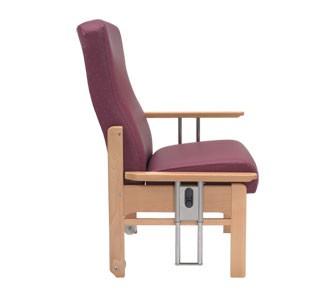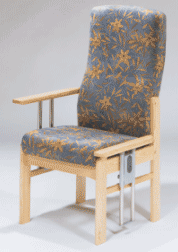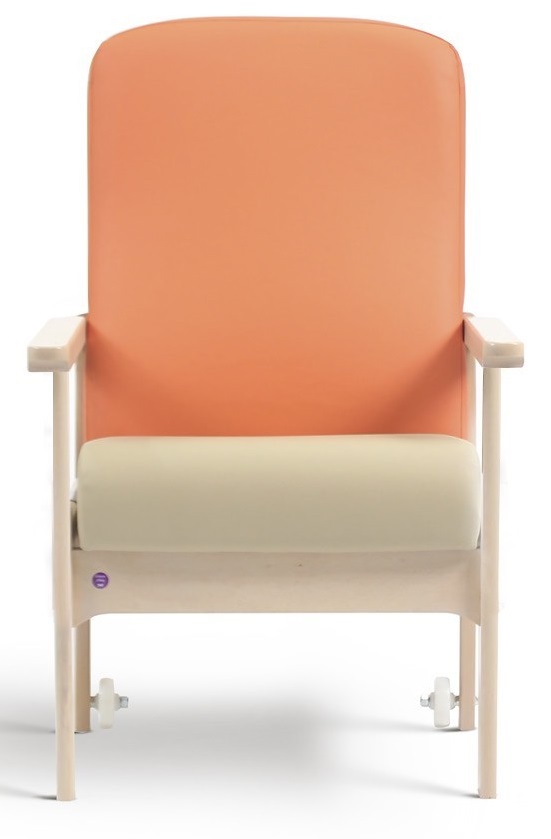


Range of heavy duty high seat chairs. Options include: drop down armrests; adjustable height seat; choice of seat width. Hire service available from some suppliers.
Arjo 1st Call
Teal
John Preston Healthcare
Manufacturer's Product Description
High risk thermal contour pressure relief. House keeping wheels for easy movement of equipment Drop down arms for lateral transfers. Height adjustable legs are fitted to accommodate the taller patients. The chairs are covered in vinyl for easy cleaning. Chairs covered in vyflex are now available this is a 2way stretch anti-fungal. Anti-bacterial pressure relieving vinyl which offers additional pressure relief. Chairs are also available in a larger seat width of 33"/84cm.
Manufacturer's Contact Details
Teal
Branch Road
Lower Darwen
Lancashire
BB30PR
UK
01254688210 sales@teal.co.ukKey Features
- straight legs
- padded, contoured seat and backrest
- wooden armrests
- open sides
- pressure relief cushion
Product Dimensions
| Dimensions | |
|---|---|
| Depth | 80cm |
Product Specification
No product specification has been specified.
Need More Help?
If you know that there is a certain product that will help you, feel free to browse through our online catalogue or use our search tool for specific product names. National retailers are listed against each product and you can click on their link to go directly to their website to order that product or contact the retailer for more information. Don't forget to tell them you found their information on our site.